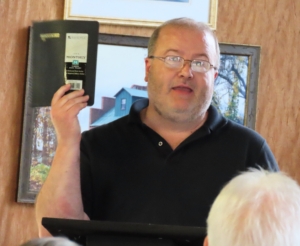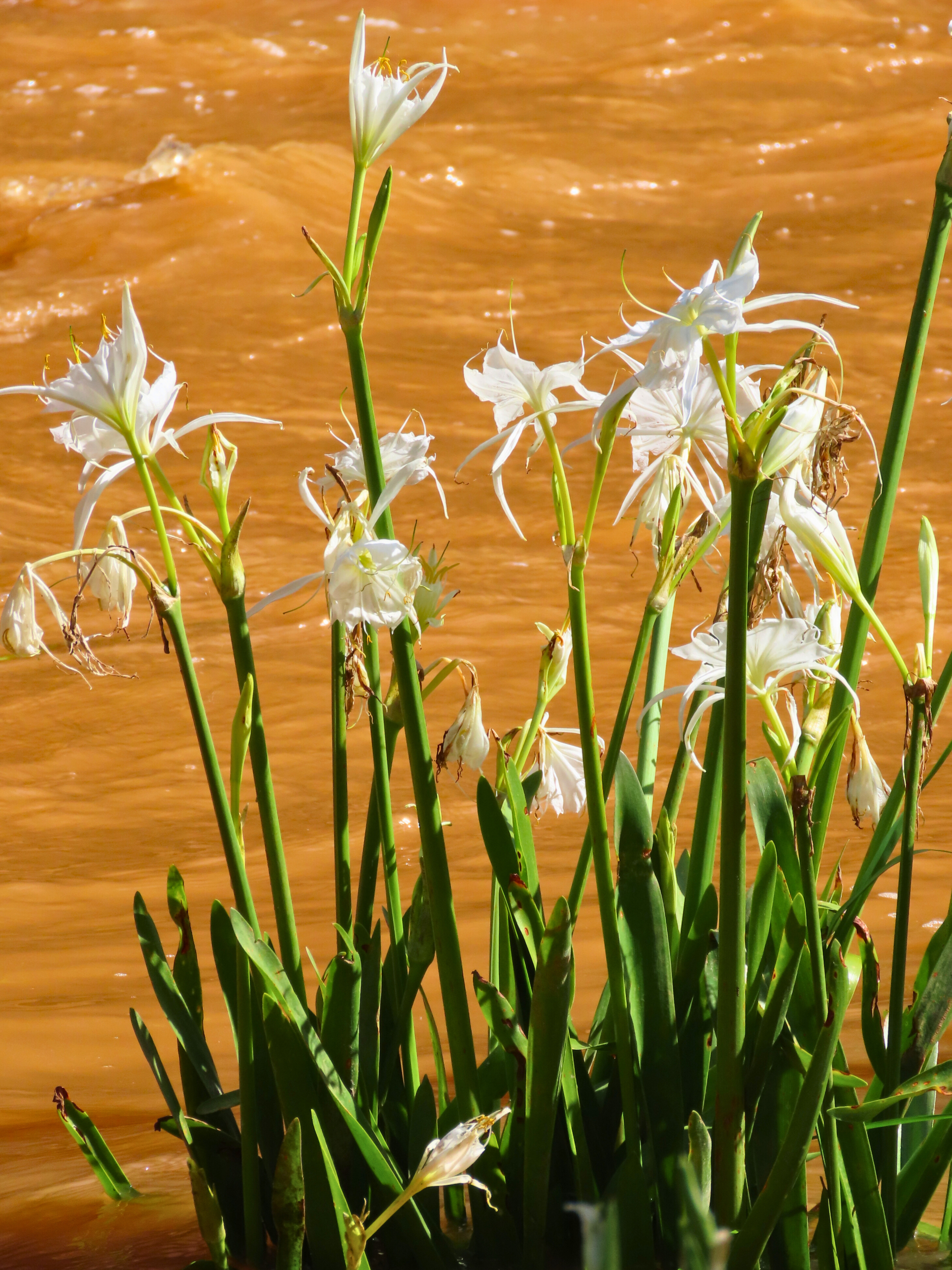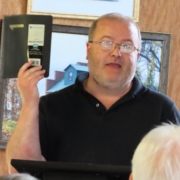Upper Savannah Land Trust Celebrates 25-Year Anniversary with Annual Meeting Filled with History Lessons
Upper Savannah Land Trust (USLT) Secretary Rick Green can trace the beginnings of USLT back to October 7, 1999, as the organization celebrates its 25th anniversary having protected more than 58,000 acres of land in western South Carolina with conservation easements.
“I brought my calendar (day planner) from 1999,” Green showed with a smile to those who helped celebrate the anniversary at USLT’s 2025 Annual Meeting held May 9 at Dorn Mill in McCormick.
“I can go to October 7th, 1999, and I have a meeting with (conservationist) Jimmy Sanders at 8:30 in the morning,” said Green, who is Government Services Director at the Upper Savannah Council of Governments (USCOG).
“That’s when Jimmy Sanders came to my office (at USCOG) and said, ‘we’ve got some landowners who are interested in talking about the creation of a land trust.’
“I didn’t know much about land trusts at the time. So I had to do my homework. Then we came back on October the 25th, 1999. Jimmy Sanders and a larger group talked about the creation of a land trust for our part of South Carolina. That wasn’t anything we had in our seven-county region. And in 2000, we had our first official land trust meeting.”
Upper Savannah Land Trust was incorporated as a 501(c)(3) non-profit organization on Oct. 1, 2000. USLT’s mission is to encourage and support conservation of natural and scenic lands, farms, forests, waterways, and open spaces.
The first USLT conservation easement of 33 acres was granted by the Tolbert family of Ninety Six in January 2001. Since then, private landowners have granted conservation easement protection over hundreds of land parcels, as small as a few acres and as large as hundreds or thousands of acres across Abbeville, Aiken, Anderson, Edgefield, Greenwood, Laurens, McCormick, Newberry, Oconee and Saluda counties. Today the Land Trust counts 138 easement projects, covering 58,301 acres, much of it working farms and forests.
“We’ve had many, many Annual Meetings over those 25 years,” said Green, who has been USLT’s secretary since the beginning. “Some of them were at specific sites where we have Land Trust conservation easements. I remember going to Viewpoint Farm and having (long-time USLT member) Peggy Adams pull up with Subway subs in the back of the car for our Annual Meeting.”
The quarter century celebration began with a field trip to Parks Mill and the Spider Lilies on Stevens Creek east of Plum Branch in McCormick County. The preserve consists of 15 acres of pine and hardwood forest, with 200 yards of frontage on Stevens Creek, where a large population of the Rocky Shoals Spider Lilies are emerging from the creek.
Near the creek, deep in the woods, is an old turbine-powered grist mill which is being restored. The Parks Mill site has been protected through the joint efforts of the SC Native Plant Society, Naturaland Trust, and USLT.
The group reconvened at the Dorn Mill Cotton Ginnery where Mary Tobin of the McCormick County Historical Commission told stories of the goldmining, farming, and family legacies intertwined into the Dorn Mill complex.
Tobin spoke of Dorn Mill’s important place in McCormick history even as a train breezed down the adjacent tracks, blowing its horn several times over her speech.
The Dorn Mill Complex was an important industrial site for early 20th century McCormick. It began in 1899 as the McCormick Cotton Oil Company, built to house a cotton-seed oil mill and two steam engines.
The Dorn brothers would take ownership of the site and converted the oil mill into a grist mill and added a sawmill, reflecting the transition from cotton to corn to timber. Closed in the 1940s, the old cotton gin is now home to the McCormick Farmer’s Market and Festival of Trees.
USLT Assistant Director Becky Brown crafted two large posters on USLT’s history as part of the celebration, including Land Trust photos and Index-Journal articles.
USLT Executive Director Wade Harrison gave a presentation on the history and heritage of the South Carolina Piedmont told through historical prose and original poetry.
Harrison opened his presentation with some of his own original poetry, asking the approximately 70 in attendance to join him to “sing praises for the traces of old farm roads, the fields where now the pine tree grows, the whippoorwills and daffodils, and gravesites marked with rough field stones,… the farmhouse ruins, old brick piles, roads that wind for red-clay miles, on ground where pines are grown in lines, bereft of soil that plows defiled.
“Our fathers’ fields were not their own, the Cherokee once called them home, and in later years, the profiteers of agriculture weren’t alone…”
Harrison described the area through the writing of explorer William Bartram, who rode on horseback through what is now McCormick County in 1775 and published Travels through North and South Carolina, Georgia, East and West Florida in 1791; and also of Confederate surgeon and educator Dr. John Henry Logan, who published the History of the Upper Country South Carolina in 1859.
Harrison talked about deadly battles involving American Patriots, British Loyalists, and Cherokee Indians throughout the Piedmont before and during the Revolutionary War, in contrast to the beauty described by Bartram, Dr. Logan and others when there were natural meadows of wildflowers, canebrakes and buffalos.
Toward the end of the presentation, Harrison stressed that we are fortunate to still have some of the natural wonders of the frontier, like the spider lilies, and that “we should protect our lands and waters today not only to save what’s still there or to restore it when we can, but simply to honor the memory of what we’ve lost.”





